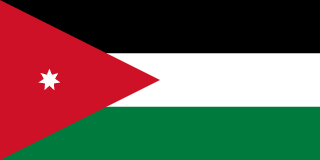Trademark vs. Copyright in Saudi Arabia: Key Legal Distinctions
As the Kingdom of Saudi Arabia continues its transformative journey under Vision 2030, the role of intellectual property (IP) has gained significant prominence in encouraging innovation, entrepreneurship, and economic diversification. Among the key pillars of IP are trademarks and copyrights, both of which protect intangible assets—but in fundamentally different ways.

This article provides a comprehensive legal comparison between trademarks and copyrights under Saudi law, highlighting their purpose, scope, registration mechanisms, protection periods, and the roles they play in a modern legal framework. Understanding the differences is essential not only for legal professionals but also for businesses, content creators, and brand owners operating in the Kingdom.
1. Legal Framework and Supervisory Authority
Both trademarks and copyrights are regulated by the Saudi Authority for Intellectual Property (SAIP), the centralized body responsible for registration, enforcement, and legal development in the field of IP.
2. Concept and Legal Definitions
Trademark
Under Article 2 of the GCC Trademark Law, a trademark is “any sign capable of distinguishing the goods or services of one undertaking from those of other undertakings.” This includes words, logos, letters, numbers, sound marks, shapes, colors, or combinations thereof.
Its primary function is to ensure brand distinction, aid in marketing, and prevent consumer confusion in the marketplace.
Copyright
A copyright protects original expressions of ideas across literary, artistic, and scientific domains. Article 1 of the Saudi Copyright Law provides protection to works expressed in tangible form, including books, software, audiovisual media, photography, architecture, and more.
Unlike trademarks, copyrights aim to reward creativity and promote cultural and intellectual production.
3. Duration and Renewal
- Trademarks: Protected for 10 years from the date of filing. Renewable indefinitely in 10-year increments upon payment of renewal fees.
- Copyrights: Varies based on authorship:
- Individual authors: Life of the author + 50 years
- Joint works: 50 years from the death of the last surviving author
- Corporate/anonymous works: 50 years from publication
These durations are aligned with international norms, reflecting Saudi Arabia’s commitment to global IP standards.
4. Scope of Protection
Trademarks:
Protection extends to any registered trademark used in commercial activities. Infringement includes the unauthorized use of a mark that causes confusion, dilution, or unfair advantage.
Copyrights:
Protection includes both moral rights (e.g., claiming authorship, preventing distortion) and economic rights (e.g., reproduction, distribution, licensing). These rights can be assigned or licensed, but moral rights remain inalienable.
5. Enforcement and Legal Remedies
Both legal regimes provide judicial and administrative avenues for enforcement, including:
Measure | Trademark | Copyright |
Administrative Action | Warning, cancellation of registration | Complaint through SAIP and enforcement notices |
Civil Remedies | Compensation for damages, injunction | Compensation, removal of infringing content |
Criminal Sanctions | Fines, confiscation, closure of infringing entity | Similar penalties, including public disclosure |
Specialized Body | IP Dispute Committee under SAIP | Same |
Saudi Arabia’s legal framework continues to strengthen enforcement through updated policies, specialized committees, and alignment with the World Intellectual Property Organization (WIPO).
6. Strategic Considerations for Businesses and Creators
- Trademark Strategy: Ideal for companies seeking to protect brand identity across products, services, and territories. Essential for building market trust.
- Copyright Strategy: Crucial for content creators, software developers, artists, and academic institutions aiming to monetize original works.
It is common for businesses to protect a single product under both regimes—for example, a software application may be copyrighted for its code and trademarked for its logo and product name.
Conclusion
trademarks and copyrights are cornerstone protections in Saudi Arabia’s evolving intellectual property system. While trademarks focus on distinctiveness in commerce, copyrights preserve the expression of creativity and authorship. Recognizing the boundaries and overlaps between these two forms of protection empowers stakeholders to secure their rights more effectively.
As Saudi Arabia deepens its integration with the global economy and knowledge-based industries, robust IP awareness will be essential for success. Whether you are a legal advisor, an entrepreneur, or a creative professional, understanding the intricacies of both regimes ensures you can navigate—and capitalize on—your rights under Saudi law.
Contact US
Your Trusted Partner
Info@almadanilaw.com

 Saudi Arabia
Saudi Arabia Jordan
Jordan
